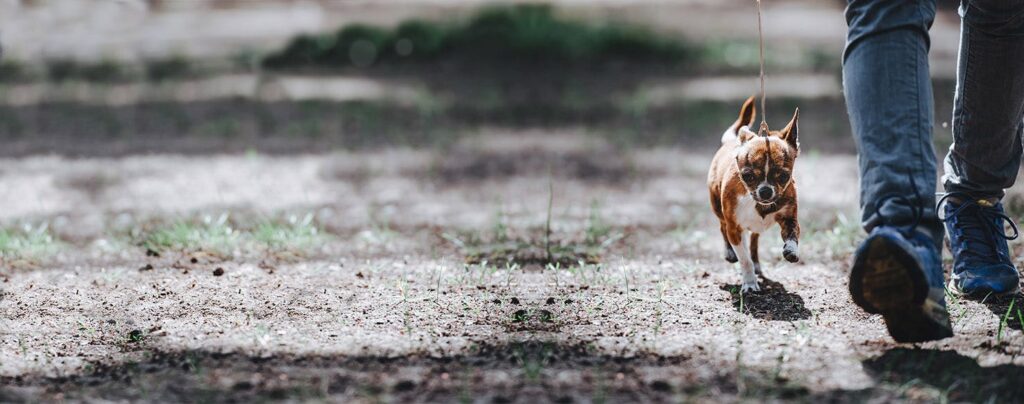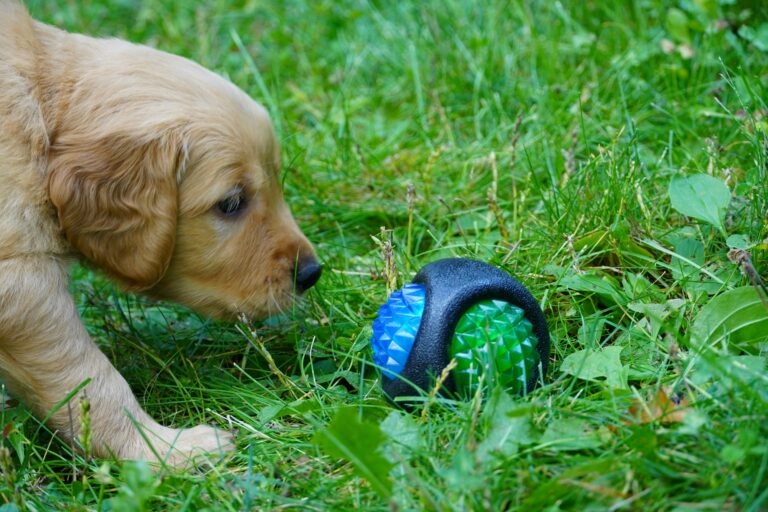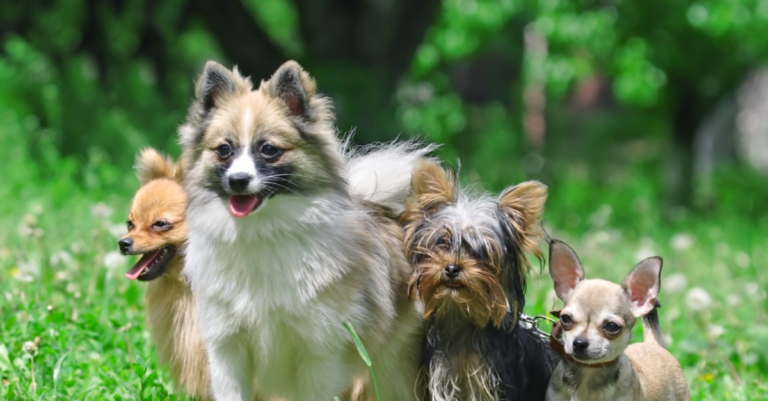Delve into the world of Charming Chihuahua Training! This comprehensive guide will help you master leash walks with your tiny companion, ensuring you can both enjoy every stroll in perfect harmony. In this post, we explore the nuances of leash training specifically catered to the unique needs and behaviours of Chihuahuas – a breed known for their diminutive size and king-sized personalities. Training your Chihuahua to behave on a leash doesn’t have to be a daunting task. With patience, consistency and a good understanding of your furry friend’s temperament, it can indeed be an enriching experience. So, are you ready to embark on this journey to better walks, better behaviour, and a happier Chihuahua? 🐕 Prepare to discover practical tips, proven techniques, and expert advice on Chihuahua leash training. From understanding their instinctual behaviour to learning how to respond effectively, we will equip you with all the knowledge necessary to become the confident pet parent your Chihuahua needs. This post promises an immersive read, filled with insights that will transform your walks into enjoyable outings, free of tugs and pulls. So, brace yourself, and let’s set on this rewarding journey together. 🐾🌳

Understanding the Chihuahua’s Temperament
In the realm of leash training, one of the most critical aspects to consider is your Chihuahua’s unique temperament. Renowned for their feisty yet loyal nature, Chihuahuas are a bundle of energy packed into a small frame. Grasping the specifics of this temperament is pivotal to effective leash training.
Chihuahuas possess an innate boldness that often belies their tiny size. They are highly alert, quick to react, and deeply attached to their owners. These traits, while endearing, can create certain challenges when it comes to training, particularly on the leash. A Chihuahua may pull, bark excessively, or resist movement due to their heightened sensitivity to their environment.
Recognizing and respecting their emotional responses, while setting firm but gentle boundaries, is crucial. Pushing a Chihuahua too hard can result in increased anxiety, while a slow and supportive approach can foster trust and cooperation.
What Makes a Chihuahua Unique?
Unlike larger breeds, Chihuahuas tend to be naturally suspicious of unfamiliar surroundings, often displaying an overprotective demeanor. This protective instinct, while beneficial in some respects, can pose challenges during leash walks. It is crucial to understand this aspect of your Chihuahua’s temperament to adapt your training approach accordingly.
Their small size also means they see the world from a very different perspective. Everyday objects, noises, and movements that seem trivial to us can be intimidating or overwhelming to a Chihuahua. This heightened sensitivity can lead to reactive behaviors such as lunging or barking during walks.
Chihuahuas also form extremely strong bonds with their owners, leading to separation anxiety or clingy behavior. These emotional ties make it even more important to establish calm, confident leadership during leash training to instill a sense of security.
Essential Leash Training Techniques
Now that we have a clearer understanding of a Chihuahua’s temperament, we can explore some critical leash training techniques. These methods will not only ensure your Chihuahua’s safety during walks but also enhance the bond between you and your pint-sized companion.
Training a Chihuahua for leash walking involves more than just teaching basic commands. It requires attention to their emotional comfort, careful management of their environment, and consistent positive reinforcement. Starting with the right techniques sets the stage for lasting success.
Choosing the Right Equipment
Choosing the right leash and harness is fundamental to successful training. Opt for a soft yet durable leash that will not irritate your Chihuahua’s sensitive skin. Harnesses are preferable to collars for Chihuahuas due to their small stature and delicate necks.
Collars can exert too much pressure on a Chihuahua’s trachea, leading to breathing difficulties or injuries. A well-fitted harness distributes pressure evenly across the chest and shoulders, providing better control and safety.
Select a lightweight leash, ideally four to six feet long, which allows for control without restricting natural movement. Avoid retractable leashes for training sessions, as they can encourage pulling behavior and make it harder to guide your Chihuahua effectively.
Establishing Trust and Familiarity
Before embarking on leash walks, it is essential to establish trust and familiarity between your Chihuahua and their leash. Allow your pet to sniff and explore the leash indoors, and reward them for positive interactions. This step is vital in building a positive association with the leash.
Leave the leash attached to their harness for short periods inside the house while supervised, allowing your Chihuahua to become accustomed to its presence without pressure. Reinforce calm behavior by offering treats and verbal praise, helping your dog associate the leash with good things.
Patience is key during this phase. Some Chihuahuas may immediately adapt, while others might need several days of gentle exposure before feeling comfortable enough to move forward.
Building Positive Walking Associations
Creating a positive emotional connection with the act of walking is crucial. Begin with very short, positive sessions where your Chihuahua has the opportunity to succeed. Celebrate small achievements such as walking a few steps calmly or standing still without fussing.
Using treats, toys, or enthusiastic praise during these early experiences can motivate your dog and help them associate leash walking with pleasure rather than stress.
Consistency in routine also helps build confidence. Walk at roughly the same times each day, using familiar routes initially to avoid overwhelming your dog with too many new stimuli at once.
Patience and Progression
Progress at your Chihuahua’s pace rather than forcing them to meet arbitrary goals. A few relaxed steps on a leash may seem insignificant, but for a nervous or inexperienced Chihuahua, it is a major victory.
Gradually extend the length and complexity of walks as your dog shows readiness. Introduce mild distractions, like passing cars or distant pedestrians, before progressing to busier environments. Always return to easier scenarios if your dog shows signs of stress.
Every successful walk reinforces calm, focused behavior. Celebrate each session as a step toward greater skill and confidence.
Managing Excitable and Reactive Behavior
Due to their natural alertness, Chihuahuas are prone to reacting strongly to stimuli such as other dogs, cyclists, or sudden noises. Managing this behavior effectively is essential to smooth walks.
Use distance as a tool — crossing the street or moving behind a barrier if an approaching dog causes anxiety can help maintain calmness. Focus your dog’s attention on you with a high-value treat or a simple obedience command like “watch me” when you anticipate a potential reaction.
Remain calm and composed yourself. Dogs are experts at picking up on our emotions. If you respond to a situation with tension or frustration, your Chihuahua is likely to mirror that stress.
Building Attention and Focus
Training exercises that build attention, such as teaching your Chihuahua to make eye contact on command, are incredibly valuable for leash walking. Start indoors with minimal distractions, then practice outdoors.
Use treats to reward quick, enthusiastic responses. Teaching your dog that focusing on you predicts good things makes it easier to redirect their attention away from distractions during walks.
Additionally, incorporating fun focus games into daily routines strengthens the handler-dog bond and increases your Chihuahua’s reliability in challenging situations.
Responding to Pulling or Lagging
If your Chihuahua pulls ahead or lags behind, avoid yanking the leash or scolding. Instead, stop walking the moment the leash tightens and wait for your dog to return to your side. Reward them immediately for loosening the leash.
Another technique is to change direction when pulling occurs, encouraging your Chihuahua to pay closer attention to your movements. This not only curbs pulling but also transforms the walk into a mentally stimulating game for your dog.
Consistency is crucial here — never allow pulling to succeed in reaching a desired location, as this reinforces the unwanted behavior.
Creating a Routine
Dogs thrive on routine, and Chihuahuas are no exception. Establishing a consistent walking schedule helps your Chihuahua know what to expect, reducing anxiety and promoting calm behavior.
Consistent starting cues, such as putting on the harness and offering a small treat before heading out, create a predictable pattern that helps set a positive tone for each walk.
Try to maintain similar durations and paths at first, then gradually introduce variations to prevent boredom without overwhelming your pet.
Gradual Training and Consistency
Training your Chihuahua to be comfortable with leash walks is a gradual process. Patience and consistency are key here.
Indoor Training
Begin by letting your Chihuahua wear the leash indoors. Allow them to move around freely, dragging the leash behind them. This helps your pet get accustomed to the feel of the leash.
Outdoor Training
Once your Chihuahua is comfortable with the leash indoors, it’s time to venture outside. Start with short walks, gradually increasing the distance as your pet’s confidence grows. Remember, slow and steady wins the race.
Addressing Common Challenges
Despite best efforts, you may encounter some challenges during leash training. Understanding these potential hurdles can help you navigate them more effectively.
Leash Biting
Chihuahuas, especially puppies, may engage in leash biting. This behavior is often a playful act, but it can interfere with training. Deter this behavior by diverting their attention with toys or treats.
Resistance to Walking
Some Chihuahuas may resist walking on a leash. In such cases, resist the urge to pull or drag them along. Instead, encourage forward movement with positive reinforcement such as treats or verbal praise.
Enriching Your Walks
Leash walks should not be a chore for your Chihuahua, but an opportunity for enrichment. Here are some ways to make leash walks more enjoyable:
- Change up your routes: Variety is the spice of life. Switch up your walking routes to give your Chihuahua new scents and sights to explore.
- Use interactive toys: Bring along interactive toys to engage your Chihuahua’s mind and make walks more fun.
Remember, each Chihuahua is unique, and what works for one may not work for another. Tailoring your approach to your Chihuahua’s specific needs will ensure a more successful leash training experience. Happy walking!
Conclusion
In conclusion, the “Charming Chihuahua Training: Mastering Leash Walks for Your Tiny Companion” presents valuable insights into training your Chihuahua for leash walks. The proper training techniques, including patience, positive reinforcement, and consistent practice, can help your petite pooch master leash walking, thereby enhancing the quality of your walks together. This article emphasizes the significance of understanding your Chihuahua’s temperament and behavioral traits, as it is crucial in the leash training process. The suggested steps for leash training, if followed diligently, can make your outings with your tiny companion more enjoyable and less stressful.
Additionally, the health benefits for your Chihuahua from regular leash walks should not be overlooked. Not only does it promote physical fitness, but it also serves as an excellent mental stimulation. Regular walks provide opportunities for your Chihuahua to explore new scents, sights, and sounds, enriching their daily life and reducing boredom-related behaviors such as chewing, barking, or digging. An engaged mind and an exercised body are essential ingredients for a well-rounded and content dog.
Furthermore, walking on a leash helps reinforce important behavioral cues such as self-control, attentiveness, and confidence. It teaches your dog to look to you for guidance when faced with unfamiliar situations, thereby building a stronger bond rooted in trust and communication. These skills go far beyond the leash and influence how your Chihuahua behaves in a variety of everyday scenarios, including meeting new people or encountering other animals.
Leash training, when approached with the right mindset and methods, transforms walks from chaotic sprints into enjoyable, relaxing outings that both owner and dog can look forward to. It is not simply about preventing pulling or lunging; it is about nurturing a calm, cooperative spirit and enhancing your relationship through shared experiences.
It is important to acknowledge that every Chihuahua is unique. While the breed may share certain general characteristics, individual personalities vary greatly. Some Chihuahuas may embrace leash training with minimal resistance, while others may require weeks or even months of careful, patient work. Setting realistic expectations from the beginning and celebrating every small success along the way will keep the journey positive and productive.
Another essential point to consider is the value of adapting your techniques to suit your dog’s learning style. Some Chihuahuas respond best to food rewards, while others are more motivated by toys, praise, or even access to their favorite sniffing spot. Observing what makes your dog happiest and most responsive will help you tailor your training plan for maximum effectiveness.
Consistency plays a pivotal role in this process. Training should be a part of daily life, not something reserved only for designated “practice” times. Reinforcing good leash behavior during every walk, no matter how short, ensures that the lessons become deeply ingrained and second nature for your dog.
Positive reinforcement is at the heart of successful leash training. Rewarding desired behaviors rather than punishing mistakes fosters a learning environment where your Chihuahua feels safe, encouraged, and eager to participate. Harsh corrections or punitive methods can undermine your progress, leading to fear-based reactions and eroding the trust you have built.
Patience, too, cannot be overstated. There will be days when progress seems to stall or even regress. On these days, it is important to remain calm, to reassess your approach if needed, and to maintain the supportive, positive attitude that your Chihuahua needs. Remember, growth is rarely a straight line; persistence will ultimately yield the results you seek.
Environmental management is another valuable tool. Setting up training sessions in environments that match your Chihuahua’s current skill level prevents overwhelming them. As your dog gains confidence and experience, you can gradually introduce more challenging settings, such as busier parks or urban sidewalks. Building up in this gradual way ensures that your Chihuahua remains comfortable and capable at every stage.
Socialization during walks is also beneficial. Properly supervised interactions with friendly dogs and people help your Chihuahua develop better social skills and decrease reactivity. These positive experiences teach your dog that the outside world is not threatening, further reducing leash-related anxiety and boosting overall confidence.
Investing time and energy into leash training also improves your dog’s safety. A well-trained Chihuahua is less likely to dart into the street, pull out of a harness, or react unpredictably to sudden stimuli. Reliable leash manners are not merely a matter of convenience—they are a fundamental component of responsible pet ownership.
Mental and emotional fulfillment are additional rewards of well-executed leash training. Giving your Chihuahua the opportunity to explore the world, under your gentle leadership, satisfies their natural curiosities and instincts. Regular walks expose them to new environments, providing vital mental enrichment that is just as important as physical exercise for maintaining a healthy and balanced dog.
In the broader picture, leash training contributes to a higher quality of life for both dog and owner. Knowing that you can walk together calmly and confidently opens up new opportunities for shared adventures, whether it’s a stroll through the neighborhood, a visit to a dog-friendly café, or a hike in nature.
Ultimately, “Charming Chihuahua Training” offers an in-depth guide to leash training that is tailored specifically for the needs of Chihuahuas. It takes into account their spirited personalities, their small physical stature, and their emotional sensitivity, offering practical, compassionate strategies for building success. It is a must-read for any Chihuahua owner who wants to take their bond with their tiny companion to the next level.
By approaching leash training with empathy, patience, and strategic planning, you set the stage for a lifetime of joyful walks, deeper connection, and mutual respect. Your Chihuahua deserves the chance to experience the world confidently and safely by your side—and with dedication and love, you will help them achieve exactly that. 🐾🐕



